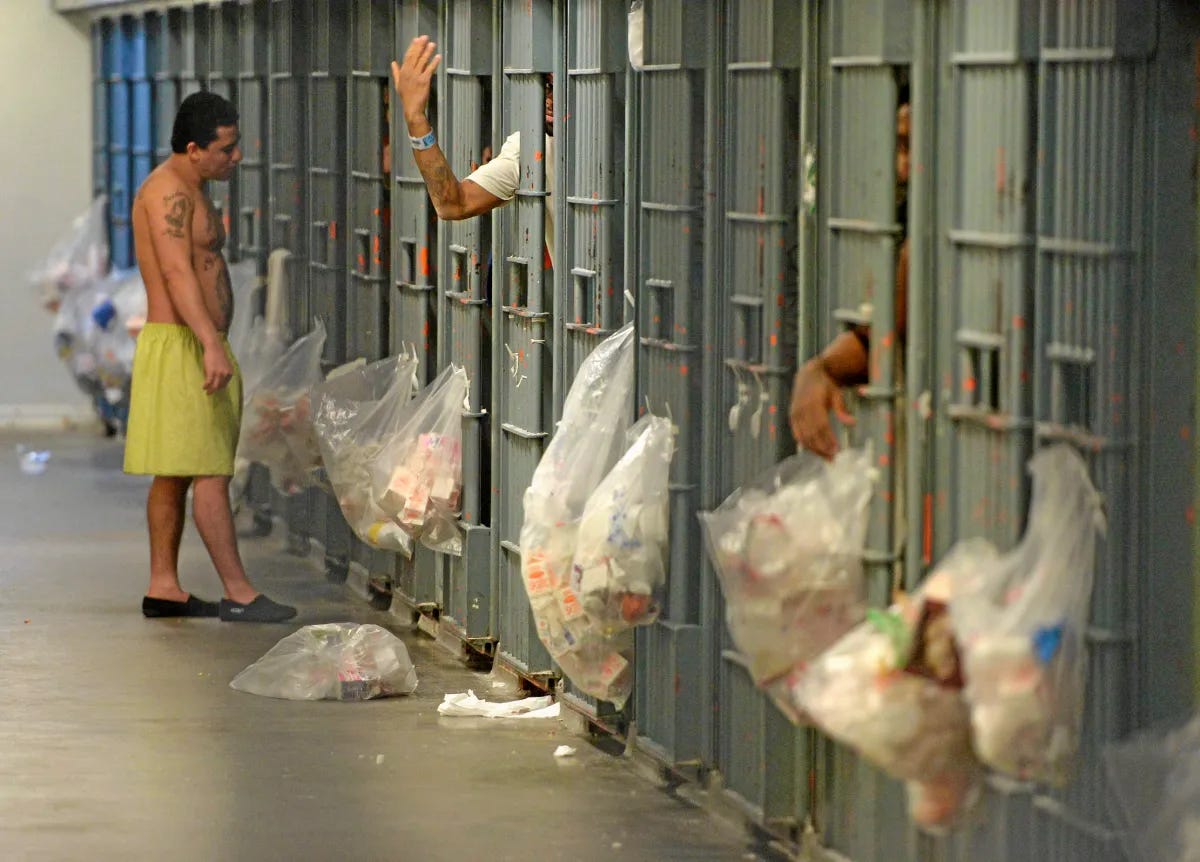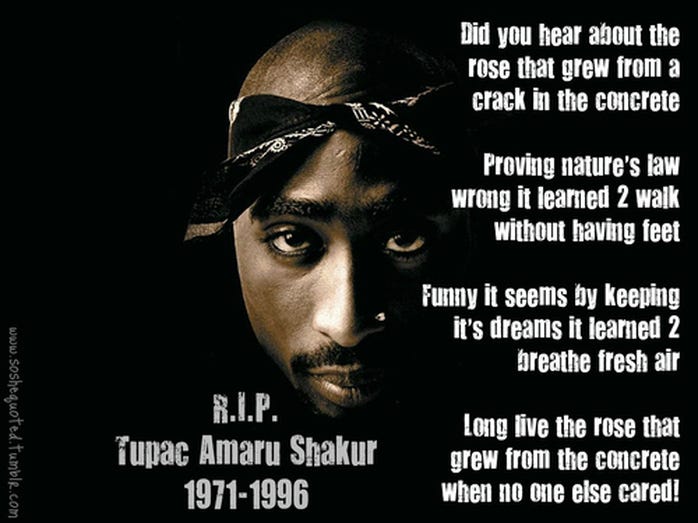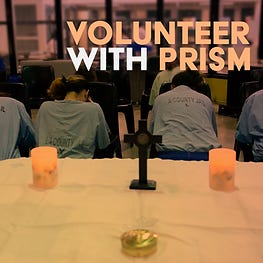Roses and Thistles in the City of Inmates
Did you hear about the rose that grew from a crack in the concrete?
Did you hear about the rose that grew
from a crack in the concrete?
Proving nature's law is wrong it
learned to walk with out having feet.
Funny it seems, but by keeping its dreams,
it learned to breathe fresh air.
Long live the rose that grew from concrete
when no one else ever cared. -Tupac Shakur
+
When Becca Stevens preached at the celebration of new ministry All Saints Church and I shared in February, 2017, she gave a list of things I needed to do as rector, Seven Ways of Loving. (The list starts at 9:55) Among them…
“Grieve with abandonment, there is more to grieve as we get older and it becomes deeper and richer.”
“Build a shelter like you might build a Cathedral.”
And then …
“Know the closest prison, and visit it and make sure you sign up as a volunteer next week.”
Blessedly, it was not a lot of work to do that. The Diocese of Los Angeles has an amazing ministry called PRISM Restorative Justice, which provides chaplaincy in the jails of Los Angeles city and county … and also works for the abolition of the current carceral system and the emergence of a system of healing and restoration.
Jail and prison ministry is important anywhere, but perhaps nowhere so much as in Los Angeles.
I’m just starting to read City of Inmates Conquest, Rebellion, and the Rise of Human Caging in Los Angeles, 1771–1965 by Kelly Lytle Hernández. And even in the introduction, she makes this case:
“Los Angeles is a hub of incarceration, imprisoning more people than any other city in the United States, which incarcerates more people than any other nation on earth. Each night, nearly 17,000 men, women, and youth are locked somewhere in Los Angeles County’s $1 billion system of jails, detention centers, and one penal farm. There are also eighty-eight other municipal jails, more than twenty juvenile detention halls and camps, and two federal facilities sited within the county. And just over the mountains lining the northeastern edge of Los Angeles County, Geo Group, a private prison company, operates a large immigrant detention center that contracts with the federal government to hold the spillover of deportees from the city. Therefore, in both size and scope, the project of human caging in Los Angeles is massive. Some say no city in the world incarcerates more people than Los Angeles. If so, Los Angeles, the City of Angels, is, in fact, the City of Inmates, the carceral capital of the world.”
But even that isn’t the lede. The first sentence, what she calls “the punchline of the book” is this:
“Mass incarceration is mass elimination.”
And then she continues:
“Incarceration operates as a means of purging, removing, caging, containing, erasing, disappearing, and eliminating targeted populations from land, life, and society in the United States.”
I cannot think of a more important place for us as the church to be present than in the jails … and by those I take the broadest possible definition that included immigrant detention centers and many (most?) of the group homes that children in the foster care system are trapped in.
It’s important because the jails particularly are places where those we try to eliminate are warehoused out of sight and, if we have our way, out of mind. And that is why Jesus tells us it is in the jails where he is to be found.
That piece of Matthew 25 – “I was in prison and you visited me” – is so much more than a call to good works. It is a recognition that those whom we find in our jails … those we are doing are best to eliminate are actually our spiritual guides. The work we do as the church must impact their lives … but more than that, the people in carceral spaces must be recognized for the deep value they have and have those of us “on the outside” allow ourselves to be deeply impacted by them as well.
One of my deep regrets during my tenure at All Saints is that I didn’t spend more time in the jails – even as I was once told during my official evaluation that I was spending “too much time in the jails.” When you sit at the head of a vestry table for a church that has a $4 million budget, it’s not enough to just read and pray about people trapped in incarceration … you need to know those people.
I believe Becca chose the word incredibly precisely and intentionally. She didn’t say “find the closest prison” or even just “visit the closest prison” … but “know the closest prison.”
Know is a term of intimacy. Of physical, embodied, intimate relationship. Relationship that can be transformative – if we let the deep beauty of our common humanity touch each other.
If we recognize that those we are trying so hard to eliminate are living embodiments of the words:
“They buried us, but they didn’t know we were seeds.”
Those words have a dual origin in an intersection of dehumanization. Originally penned by poet Dinos Christianopoulos, who was ostracized by the Greek literary community in the 1970s because he was gay … it was later adopted by the Zapatistas in their fight for indigenous sovereignty in Mexico.
Those two communities … people of color and people identifying as gay, lesbian, bisexual, transgender, intersex, queer and more … also represent some of the largest population of the American disappeared.
According to the Sentencing Project:
LGBTQ+ adults are incarcerated at three times the rate of the total adult population. LGBTQ+ youth’s representation among the incarcerated population is double their share of the general population.1
People of color remain massively overrepresented in prisons, accounting for nearly 7 in 10 people in prison.2
Those statistics weren’t on my heart when I walked into Men’s Central Jail (which, with its partner facility Twin Towers, eliminates more than 6,000 people from society … very probably the largest jail in the world outside of Gaza).
No … every time I walk into MCJ or Twin Towers, what I’m most aware of is how powerful and intentional the effort is to dehumanize those who have been disappeared inside those walls.
I do not argue that there are people from whom society legitimately needs to be protected. I also do not argue that actions have consequences and particularly violent crime cannot be ignored.
And … everything we know about brain science tells us that much if not all of violent behavior has its roots in trauma, disordered attachment – with things like poverty, marginalization and abuse being the key drivers. And it also tells us that responding to that behavior by inflicting more trauma just perpetuates the cycle.
I am a prison and police abolitionist because I believe the only justice that will roll down forever like waters is a justice that restores relationship. That #LoveHeals is true because it has been tested and proven on the deepest wounds of those who have been sentenced to elimination.
Sharon Crandall has been one of my great guides and teachers in this work … and I was honored Sunday when she asked me to accompany her on her Sunday visit to Men’s Central Jail. We brought Eucharist to the LGBTQ unit … or at least the 11 people from that unit who were allowed to participate.
They walked in escorted by a guard … those incarcerated in the LGBTQ+ unit are not allowed to walk unescorted through the halls for fear they will be assaulted … another extra dehumanization. And yet as they walked down the hall toward the makeshift chapel room, they began to sing:
“Oh when the saints, go marching in.
Oh when the saints go marching in.
Oh Lord, I want to be in that number
When the saints go marching in.”
And for the next hour we talked, prayed, wept and ate together.
The gospel for the day (from Dr. Wil Gafney’s Women’s Lectionary for the Whole Church, Year B was from John’s Gospel:
“Very truly, I tell you all that you will weep and mourn, but the world will rejoice; you all will have pain, but your pain will turn into joy. When a woman is giving birth, she has pain because her time has come. But when her child is born, she no longer remembers the tribulation because of the joy of having brought a human being into the world. So you all have pain now; but I will see you all again, and your hearts will rejoice, and no one will take your joy from you.”
But the real text we used was Tupac’s beautiful poem, “The rose that grew from a crack in the concrete.”
We told the story of Tupac … Tupac Amaru … whose name means “shining serpent.”
We told the story of his mother, Afeni – a revolutionary in the Black Panther Party. How she as imprisoned for 156 counts of conspiracy to set off a race war while pregnant with him. She was acquitted on all counts.
How Tupac grew up in and out of houses and in homeless shelters.
How he sold drugs and struggled with addiction
And how one day, he was walking in a park and he met singer and Dancer Leila Stenberg … she saw his light, introduced him to a friend who hooked him up with a rap group called Digital Underground and the rest was history.
Did you hear about the rose that grew from a crack in the concrete?
That all it takes is one person.
One person to see your beauty.
One person who can help you see the beauty in yourself.
One person who can see you as God sees you.
We talked about Thistle Farms and considering the thistle … a plant that is seen by too many people as a weed but for those with eyes to see it is a beautiful flower with healing property that has been the healing power of love for thousands of women.
And in that makeshift chapel, the stories began to be told. Stories of the concrete that encased them and the struggle to break through.
And tears were wiped away from eyes.
And we took anointing oil from Thistle Farms … and shared it … and breathed it in deeply, letting the beauty of the aroma fill our lungs … and then coat our heads and our hands.
Because we were all roses … and we needed to smell like roses … and we left committed to remind each other that we --- each and all of us – is a rose growing from a crack in the concrete.
And lest you forget … you are a rose, too. And you have your own concrete that you have had to and continue to have to break through.
Leaving the jails is a terrible thing. It’s a terrible thing to emerge into a freedom knowing that those you love are still trapped inside.
I turned to Sharon as the door slammed behind us and said, shaking my head, “exactly who in society are we protecting from them?” Because all I had seen was beauty and strength and inspiration.
And if you are tempted to say “well, they must have done something” … I ask you to consider what any of us might do if we lived lives of continual dehumanization … or perhaps what we have done in those circumstances. And what we have found we can do when instead of others treating us like as pestilence to be eliminated, we are treated as beautiful, fragrant roses to be loved and enjoyed.
“Grieve with abandonment, there is more to grieve as we get older and it becomes deeper and richer.”
“Build a shelter like you might build a Cathedral.”
And then …
“Know the closest prison, and visit it and make sure you sign up as a volunteer next week.”
Who knew that that last call would outlast all the others. Would – in my moments of faithfulness -- inform all the others.
Jesus knew.
Jesus knows.
Because that’s where we find them.
Long live the rose that grew from concrete
when no one else ever cared.
++++++++++++++++++++++++
YOU can be a jail chaplain, too. Just go to https://www.thecflc.org/prism.
Prism is always in need of compassionate souls to join our team of volunteers. In addition to Sunday worship services and individual chaplaincy/spiritual care, we often need volunteers to help write letters and assist in other ways.
Contact us or join an Information Session (click on the link) to learn more!
https://www.sentencingproject.org/policy-brief/incarcerated-lgbtq-adults-and-youth/
https://www.sentencingproject.org/reports/mass-incarceration-trends/










Thank you.
Thank you, Mike… love you and Sharon so much ❤️